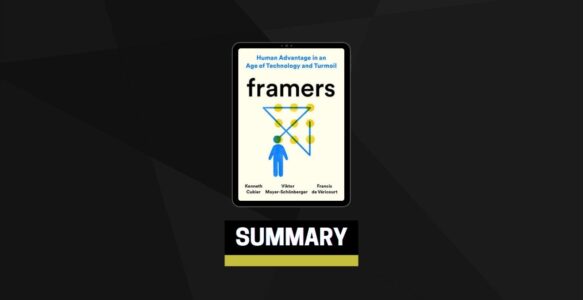Thinking Outside The Box
Self-improvement books frequently call on their readers to “think outside the box” when they want to advocate creative thinking, unencumbered by stifling limitations. It has become a cliché, especially in the world of business and management.
The task in the nine-dot test is to connect three rows of three dots using only four straight lines, without lifting the pen. Our mind imagines the dots as forming a square, but the only way to solve the test is to draw beyond the implied border—hence “think outside the box.” The general point is that solutions will present themselves more easily if we leave behind our existing mental models.
The nine-dot test may be useful to get people to see options they don’t realize exist, but as a metaphor, “thinking outside the box” is fundamentally ill-conceived. As humans, we cannot not frame. We can’t switch it off; we frame all the time. The only choices we have are what frame we use and how well we use it. Even if we could think outside of frames, it would be of questionable value.
Why Framing?
Human framing is useful precisely because it lets our mind wander in a structured, purposeful, and constrained way. The box is very much the magic.
The nine-dot test itself tells as much. There are, in fact, several possible solutions: wrap it around like a barrel, or fold it, or cut it in pieces. Or just imagine it solved in four-dimensional space. That’s not allowed? Who says? Any imposition of a restriction is just another box, which we have been told we should deliberately think beyond. For every test, we can imagine a crazy solution that’s completely outside the mental box. But that does not solve the problem; it does not provide us with a workable choice, an effective answer.
To get that, we need to constrain our imagination. The “aha moment” that gives us the solution to the nine-dot test—to connect the dots by drawing lines beyond the box that we imagine is formed—requires us to limit our thinking to a two-dimensional sheet of paper, without considering things like folds and scissors. The nine-dot test necessitates constraints. It isn’t an example of “thinking outside the box” but of human framing. It’s an example of the need to consider our mental model, choose our constraints, and with them imagine alternatives. The test is a useful reminder of the importance of choosing the right frame and imagining with the right constraints.
A Guide to Working with Frames
#1 Harness Mental Models
Framing happens all the time but can deliberately be used to improve decisions.
Identify and inspect the assumptions in your mental models.
Ask “why” and “how” questions: Why did you reach this conclusion? How must the world work if you anticipate this happening?
Imagine how a wise friend, a historical hero, or a rival might frame a certain challenge.
Ask yourself what would need to change for you to want to frame a situation differently.
When your views clash with another’s, try to characterize the underlying way they see the world.
#2 Dream With Constraints
Applying a frame is about swiftly and efficiently identifying appropriate options.
Focus on those elements that are most easily changeable.
Start by making minimal changes to your constraints, and gradually contemplate more elaborate modifications.
Be careful to remain consistent by weighing whether the change contradicts any underlying assumptions or beliefs.
Embed constraints in a physical model if it is too difficult to keep all of them in mind at once.
#3 Reframe Wisely
Switching to an alternative frame lets you see the world differently, but it is risky.
See if you already have a frame in your repertoire that will work.
Try repurposing a frame that you can apply from a different domain.
Invent a new frame as a last resort, since it’s the hardest option.
Keep in mind the trade-offs between tight frames (fast but limited) and broad ones (comprehensive but time-consuming).
Don’t reframe repeatedly, since it leads to disorientation.
#4 Conditions Matter
We can improve our framing through cognitive diversity.
Develop a curiosity for the unfamiliar to continually challenge your worldview.
Be willing to accept tensions among frames: they are less an indication of faulty reasoning than of the complexity of reality.
Speak the truth, even when it is not comforting for individuals or organizations. The courage is respected by those who matter.
Seek dissent rather than confirmation.
When deciding in teams, have each person frame the problem independently before sharing views and deciding as a group.
#5 Think Beyond Yourself
The role of society is to ensure frame pluralism to produce optimal responses in times of change.
Strive to see the colorful; don’t be color-blind. Speak openly but respectfully about differences.
Regard societal friction as an advantage, not a drawback.
Use education to instill respect for others’ frames.
Promote a commingling of cultures as a way to foster imagination, innovation, and dynamism in a society.
Reject anything that presents itself as a single frame to encompass all of reality.


